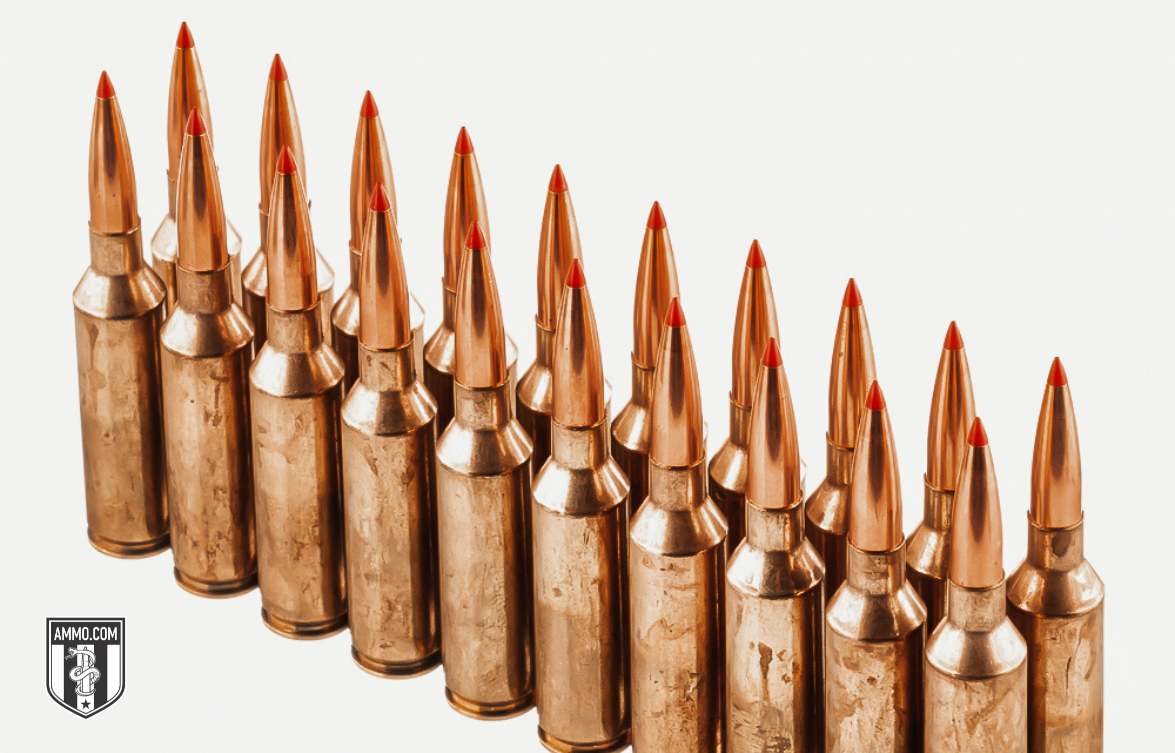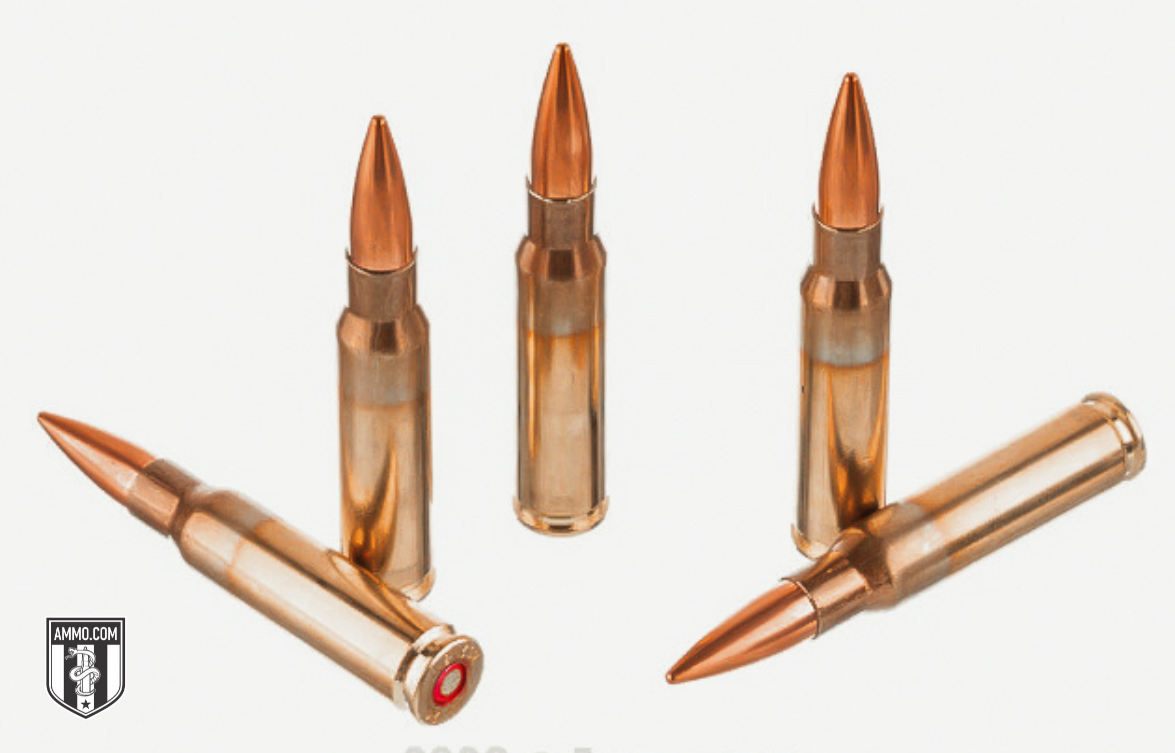300 PRC vs. 308 Winchester: New Long-Distance Cartridge Aims To Dominate
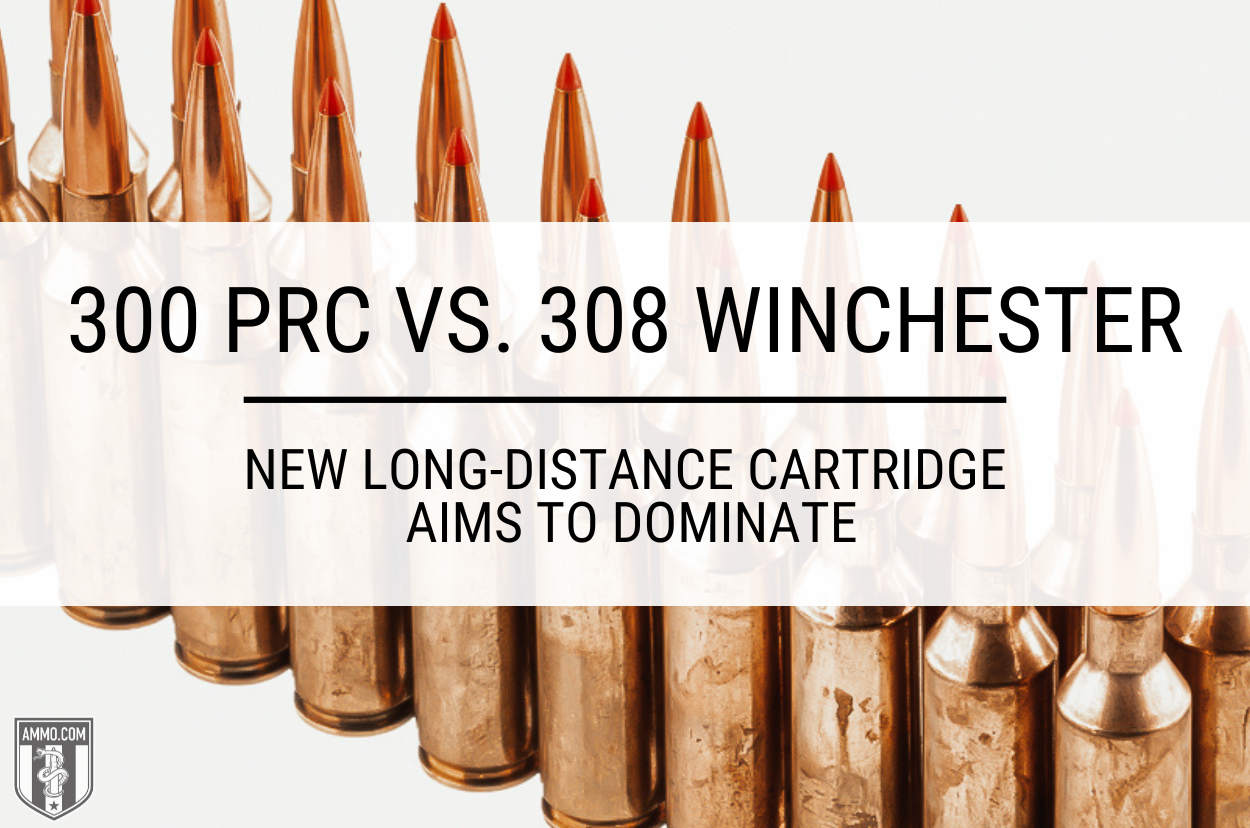
The 308 Winchester has proven itself at the range and field, but the 300 Precision Rifle Cartridge (PRC) threatens its long-standing dominance. In this 300 PRC vs. 308 Win article, you’ll learn which option is better for your shooting preferences.
We’ll discuss the differences in recoil, trajectory, Ballistic Coefficient (BC), cost, and several other factors regarding how each cartridge performs on paper and in the real world.
Difference Between 300 PRC and 308 Winchester
Although these cartridges fire the same diameter bullet, they perform quite differently from one another. A cursory examination of their physical dimensions will help explain how.
Cartridge Specs
The 300 PRC’s parent case is the .375 Ruger, while the .308 Win is the .300 Savage. Both cartridges fire a bullet with a diameter of 0.308” and have a similar neck diameter (0.3410” for the 300 PRC; 0.3433” for the 308 Win).
The 300 PRC larger size becomes apparent when you observe its base diameter: 0.532”, as opposed to the 308 Winchester at 0.4709”. The 300 PRC's case length is 2.58”, dwarfing the 2.015” long 308 Win case. The 300 PRC cartridge is nearly 1” longer than the 308 Winchester (3.7” 300 PRC; 2.8” 308 Win).
Its larger case grants the 300 PRC a higher case capacity: 77 grains H2O, as opposed to 56 grains H2O for 308 Winchester. The 300 PRC’s maximum pressure is 65,000 psi – 3,000 psi higher than the 308 Winchester's 62,000 psi max pressure.
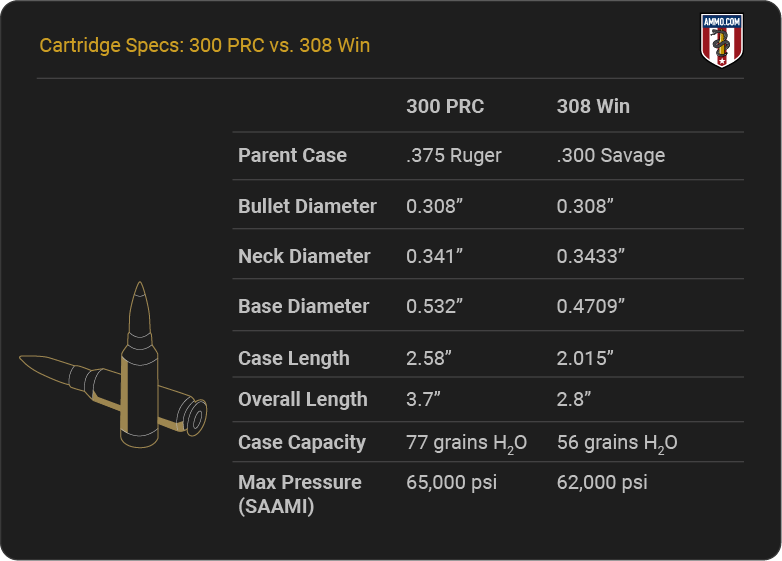
Let’s see how the cartridges’ different specs impact their performance relative to one another.
Recoil: 300 PRC vs. 308
I always compare recoil because it’s one of the first questions a shooter asks. We all want to know how much it kicks.
The less recoil you feel, the more accurate you can shoot. Less is always better (unless you’re a macho man who has to prove how tough you are to the world). Felt recoil is subjective. It varies shooter to shooter. That’s why we base our comparison on free recoil energy, an objective measure of recoil determined by four factors: projectile weight, propellant weight, muzzle velocity, and firearm weight.
The recoil energy of the 308 Winchester is about 17.5 ft-lbs of energy (when firing a 180 grain bullet at 2,610 fps from an 8 pound rifle). The recoil energy of the 300 PRC is about 36 ft-lbs (when firing a 212 grain bullet at 2,860 fps from an 8 pound rifle).
The 308 Winchester jumps out to an early lead because it has less than half the recoil of the 300 PRC.
Trajectory
A bullet’s trajectory is the path it takes upon exiting the muzzle. We measure trajectory in terms of bullet drop and rise, as it resembles an arch, as gravity begins pulling on the bullet when it leaves the barrel.
A flat trajectory is preferred for firing across longer distances, as it requires the shooter to make fewer adjustments to remain accurate.
A cartridge's trajectory varies from load to load, so the following scenarios are generalizations.
A 300 PRC 212 grain ELD-X bullet drops -38.3” at 500 yards when sighted in at 200 yards. A 190 grain CX bullet drops -36.0” at 500 yards when sighted in at the same distance.
A 308 Winchester 150 grain FMJ bullet drops -47.2” at 500 yards when sighted in at 200 yards. A 180 grain Trophy Bonded Tip drops -51.1” at 500 yards when sighted in at the same distance.
The 300 PRC has a flatter trajectory than the 308 Win. It wins this section and ties things up.
Accuracy: 308 Win vs. 300 PRC
The 308 Win and 300 PRC are incredibly accurate cartridges. Match grade loads with Sierra MatchKing, Hornady ELD-X, and Berger VLD Target bullets will give you sub-MOA (minute of angle, where 1 MOA = 1" at 100 yards) accuracy.
It’s crucial to remember that accuracy is more often a function of the shooting platform and the shooter than it is of the cartridge. The ammo and rifle pairing, environmental conditions, trajectory, recoil, and shooter all play vital roles in determining how much accuracy a cartridge can exhibit.
For the sake of argument, we’ll only consider the cartridges' trajectories and recoil. That makes this section a tie, as the 300 Winchester has less recoil, but the 300 PRC has a flatter trajectory.
Recoil-sensitive shooters should choose the 308 Win. Shooters looking to get maximum distance (and who have little concern for recoil) should choose the 300 PRC.
Ballistic Coefficient
Ballistic coefficient (BC) measures how effectively a bullet resists wind drift and air resistance. It’s a numeric representation of how aerodynamic a bullet is. A higher BC is preferred, as it indicates the bullet will resist wind deflection better.
Generally, a heavier, sleeker bullet has a higher BC, as it takes more force to disrupt its flight than it does a lighter, blunter projectile.
The 300 PRC is explicitly designed to fire heavier bullets. Despite both cartridges firing .30 caliber bullets, the 308 Win lags behind in BC.
The 308 Winchester has a G1 BC ranging from .350 to .500. The 300 PRC has a G1 BC ranging from .600 to .800, which is a relatively high ballistic coefficient. It’s comparable to many 338 Lapua Magnum cartridges, an elite sniper round.
The 300 PRC takes the lead by having a higher BC than the 308 Winchester.
Barrel Life
For the average hunter, barrel lifespan is irrelevant. They simply won’t fire enough ammo for it to matter. However, it can become a significant factor for precision shooters who spend a lot of time at the range.
The 300 PRC's barrel life is about 1,600 rounds. You’ll likely notice your accuracy and consistency dropping if you exceed this number. The 308 Winchester’s barrel life is about 3,000 rounds (some shooters claim to get 5,000+ out of their 308 Win barrels).
The 308 Winchester wins this section, as its barrel lasts much longer than the 300 PRC’s.
Stopping Power: 300 PRC vs. 308 Win
“Stopping power” is difficult to define. It means different things to different shooters. We could argue about the exact definition until we’re blue in the face.
To further complicate the issue, shot placement is more important than stopping power. A poorly placed shot from a cartridge with more “stopping power” can be less effective than a well-placed shot from a weaker round.
For the sake of time, let’s agree that penetration depth, size of the hole created (aka wound column diameter), and kinetic energy transfer are the primary factors which determine stopping power.
Considering this, the 300 PRC has more stopping power than the 308 Win. It fires the same diameter projectiles, but they’re heavier and maintain more energy downrange.
The 300 PRC wins this section because it has more stopping power, regardless of your definition of it.
Hunting

The 308 Winchester is a legendary big game hunting cartridge. It is known for taking whitetail and mule deer, elk, bear, and most other North American big game animals.
The 300 PRC is a relatively new cartridge designed for long-range hunting. It can ethically take mule deer, elk, moose, and bear.
Both cartridges are versatile and capable of ethically harvesting various large game animals. However, the 300 PRC is typically overkill for medium game, whereas the 308 Win will not damage as much meat with a well-placed shot.
This section is still a tie, as it ultimately depends on the species you’re hunting. Long-distance hunters prefer the 300 PRC, whereas hunters who take shots within 300 yards (especially on medium-game animals) tend to prefer the 308 Win.
Cost & Availability
When purchasing a new cartridge, I consider the overall cost and availability of factory ammo and rifles.
Because the 300 PRC is still very new compared to the venerable 308 Winchester, ammo selection will be lower, and prices will be significantly higher. This is partly because the 300 PRC is a 30-caliber magnum cartridge, which requires more raw materials for its manufacture.
300 PRC bolt-action rifles are more expensive and less abundant, as they are more niche than 308 Winchester rifles.
The 308 Winchester wins this section. Factory ammo costs less and is more abundant.
Reloadability
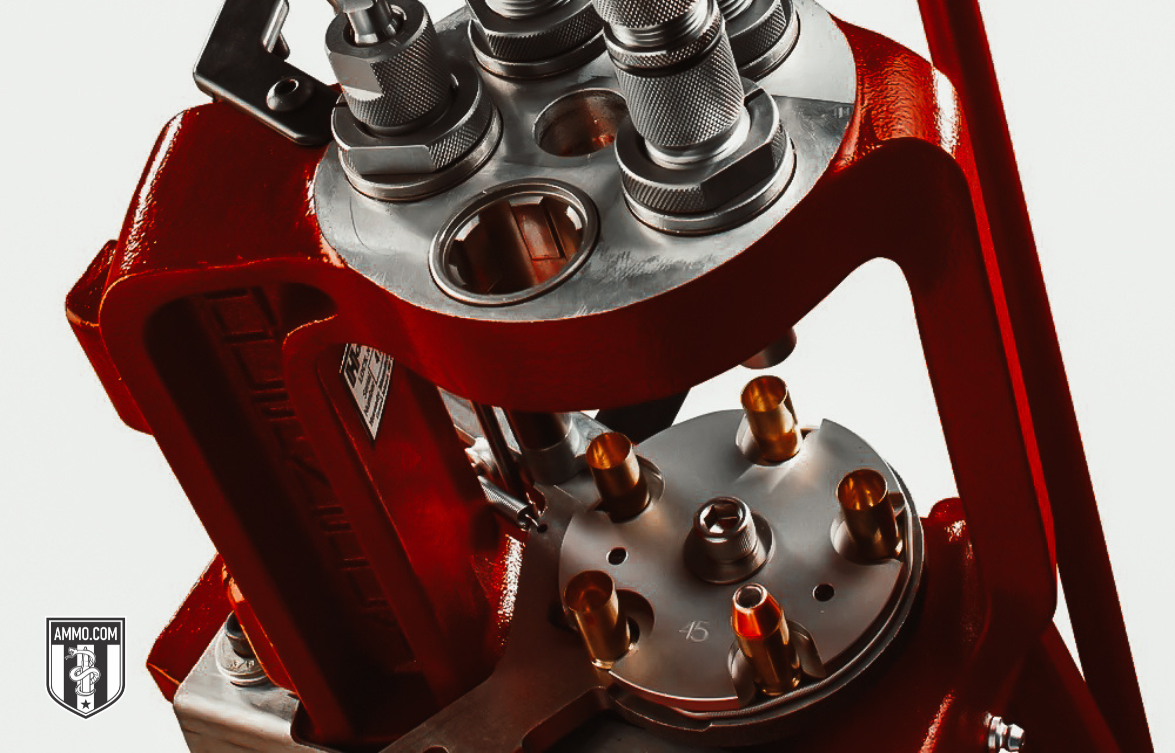
Reloading is an excellent way to craft the perfect round for your firearm and save a little money on factory loads. Most people are deterred by the initial investment in supplies and equipment. However, you can create higher-quality ammo for less, and enjoy total control over most of the process.
There are a lot of information and supplies for reloading the 308 Winchester; less so for the 300 PRC. While the 300 PRC doesn’t have as much information and supplies as the 308 Win, it can still be reloaded, making this section a tie.
Ballistics Charts
The team at Ammo.com has gathered ballistic data for each cartridge for you to compare.
300 PRC Ballistics Table
Note: This information comes from the manufacturer. The actual ballistics obtained with your firearm can vary considerably from the advertised ballistics. Also, ballistics can vary from lot to lot with the same brand and type load.
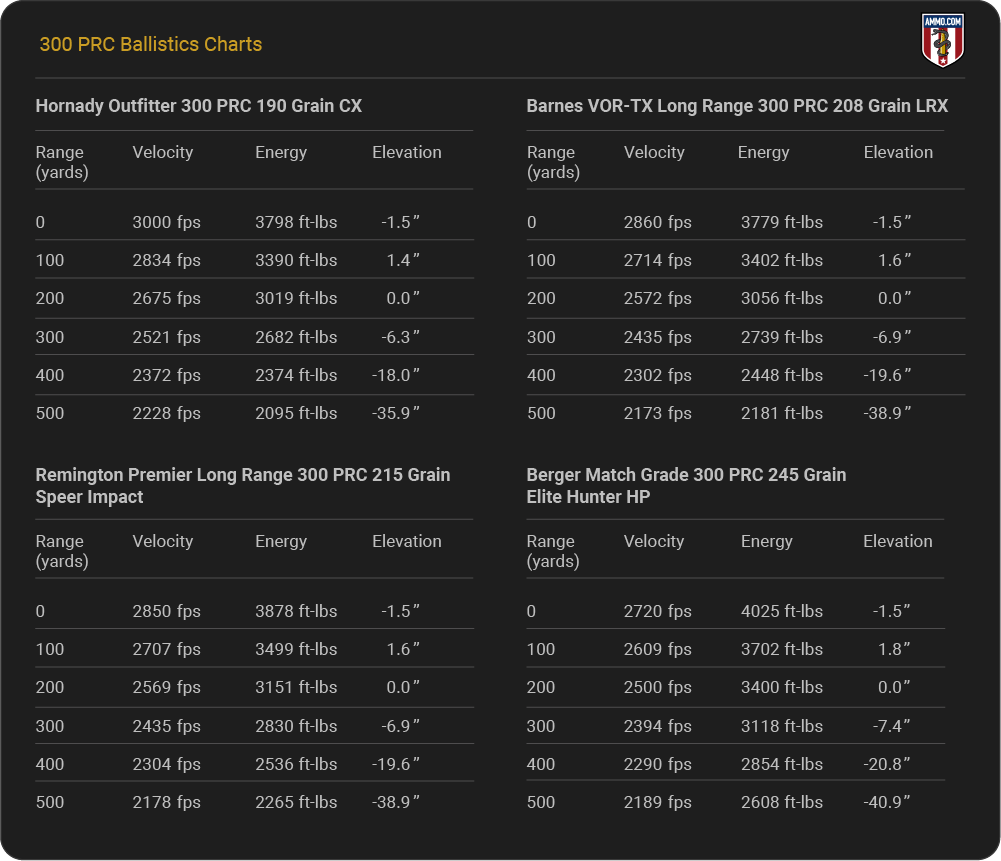
Take a deeper dive into 300 PRC ballistics.
308 Win Ballistics Table
Note: This information comes from the manufacturer. The actual ballistics obtained with your firearm can vary considerably from the advertised ballistics. Also, ballistics can vary from lot to lot with the same brand and type load.
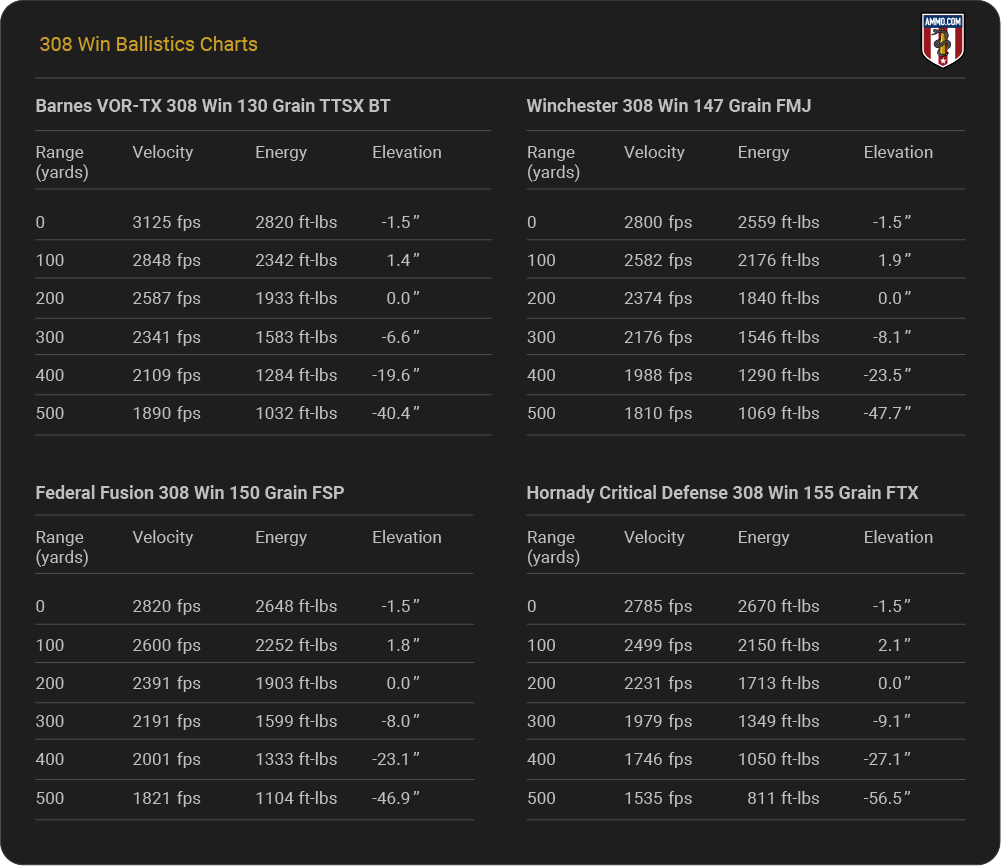
Take a deeper dive into 308 Winchester ballistics.
300 PRC Brief History
The Hornady 300 Precision Rifle Cartridge (PRC) was specifically designed for long-range precision shooting. Hornady developed the cartridge to fire long, aerodynamic, and high BC .30 caliber bullets, which is everything long-range shooters want.
Hornady rolled out their new cartridge at the 2019 SHOT Show, and received SAAMI approval for it in August 2018.
Although the 300 PRC is still somewhat obscure, it is becoming more popular in the long-range competition circuit and garnering some attention from USSOCOM.
308 Winchester Brief History
After the Korean War, the U.S. Army developed a new round to replace the 30-06 Springfield. They came up with the 308 Winchester, which fits into a short action and had similar ballistics to the 30-06. The new 308 Win was chambered in the Army’s new battle rifle, the M14. The new M16 and 5.56x45mm NATO replaced it a few years later.
Although the 308 Winchester has not been the main battle rifle cartridge for the U.S. Armed Forces for decades, it has continued to serve in multiple machine guns and precision bolt-action rifles for snipers.
The 308 Win's main success came from civilian shooters and hunters, who loved the new cartridge's flexibility and quickly exchanged their heavy long-action 30-06 Springfield rifles for lighter, more maneuverable short-action hunting rifles.
The 308 Winchester has been many hunters' go-to big game cartridges. It’s unlikely that the American shooting community will give up its beloved .30 cal cartridge anytime soon. Hunters love the long-range capability offered by their 308 rifles and relatively inexpensive ammo. They also don’t mind that the 308 has considerably less recoil than heavier cartridges like the 300 PRC, 300 Win Mag, or 338 Lapua Mag.
Parting Shots
Now that you’ve finished reading our 300 PRC vs. 308 Winchester comparison, you know that the 300 PRC won three sections (trajectory, ballistic coefficient, and stopping power). Three sections were a tie (accuracy, hunting, and reloadability). The 308 Winchester won three sections (recoil, barrel life, and cost).
The 300 PRC is perfect for long-range target shooters and big game hunters. However, it is overpowering for recoil-sensitive shooters and medium-sized game hunters. That’s when you should consider the 308 Winchester.
Both cartridges have their place, but I don’t see the 300 PRC replacing the 308 Win anytime soon.
Frequently Asked Questions
The team at Ammo.com has gathered and answered some of the most commonly asked questions about the 300 PRC and 308 Win.
How Does the Ballistic Performance of the 300 PRC compare to the 308 Winchester?
The ballistic performance of the 300 PRC dominates the 308 Winchester in maximum range, velocity, and kinetic energy.
How Does the Barrel Life of the 300 PRC Compare to the 308 Winchester?
The barrel life of the 300 PRC is significantly less than that of the 308 Winchester: 1,600 rounds for the 300 PRC, compared to 3,000+ for the 308 Winchester.
Which Has Less Recoil: 308 Winchester, or 300 PRC?
The 308 Winchester has less recoil than the 300 PRC.
Ammo Comparisons
- .308 vs 5.56
- 6.5 Creedmoor vs .308
- .300 Blackout vs .308
- .300 Win Mag vs .308
- .243 vs .308
- .308 vs .30-06
- 7mm-08 vs .308
- .270 vs .308
- 7.62x39 vs .308
- .223 vs .308
- .338 Lapua vs .308
- .380 ACP vs 9mm
- .223 vs 5.56
- .300 Blackout vs 5.56
- 9mm vs 45 ACP
- 9mm vs 40 S&W
- .357 SIG vs 9mm
- 10mm vs 9mm
- 9mm vs 9mm Luger
- .243 vs .270
- .300 Win Mag vs .30-06
- .270 vs .30-06
- .40 vs .45
- 38 Special vs 357
- 9mm vs 40 vs 45
- 5.56 vs 7.62x39
- 338 Lapua vs .30-06
- .30-30 vs .30-06
- 300 PRC vs 338 Lapua
- .30-06 vs 7mm
- 300 Win Mag vs 338 Lapua
- 300 PRC vs 300 Win Mag
- 300 WSM vs 300 Win Mag
- 338 Win Mag vs 338 Lapua
- 12 Gauge vs 20 Gauge
- 10mm vs 357 Mag
- .30-30 vs 7.62x39
- 224 Valkyrie vs 22-250
- 17 HMR vs 22 Mag
- 7.62x39 vs .300 Blackout
- 45 ACP vs 45 Auto
- 45-70 vs 30-30
- 300 Blackout vs 223
- 357 Magnum vs 9mm
- 350 Legend vs 300 Blackout
- 224 Valkyrie vs 223
- 45 ACP vs 38 Super
- 6.5 Grendel vs .308
- 17 HMR vs 22 LR
- 10 Gauge vs 12 Gauge
- 22-250 vs 223
- 45 Colt vs 45 ACP
- 350 Legend vs 30-30
- 5.7x28 vs 223
- 5.7 vs 9mm
- 5.56 vs 5.7
- 22 vs 9mm
- Buckshot vs Birdshot
- 450 Bushmaster vs 308
- 450 Bushmaster vs 223
- Buckshot vs Slug
- 6.5 Grendel vs 5.56 vs 223
- 6mm ARC vs 6.5 Grendel
- 44 vs 45
- 458 SOCOM vs 5.56
- 357 vs 44
- 32 ACP vs 380
- 300 Win Mag vs 338 Win Mag vs 338 Lapua Mag
- 450 Bushmaster vs 458 SOCOM vs 50 Beowulf
- 6mm Creedmoor vs 6.5 Creedmoor
- TMJ vs FMJ
- 44 Special Vs 44 Magnum
- 45 90 vs 45 70
- 6.8 Western vs 6.8 SPC
- 50 Beowulf vs 50 BMG
- 26 Nosler vs 6.5 PRC
- 28 Gauge vs 410
- 6.8 SPC vs 5.56
- 6.8 SPC vs 6.5 Grendel
- 6.8 Western vs 7mm Rem Mag vs .28 Nosler
- 6.8 Western vs 6.5 Creedmoor
- 22 Hornet vs 223
- 6.8 Western vs 6.5 PRC
- .410 vs 12 Gauge
- .410 vs 20 Gauge
- 22 LR vs 22 Mag
- 6mm ARC vs 243
- 7mm-08 vs 270
- 243 vs 6.5 Creedmoor
- Nickel vs Brass Casing
- 204 Ruger vs 223
- 50 Beowulf vs 5.56
- 260 Remington vs 6.5 Creedmoor
- 6mm Remington vs 243
- 28 Nosler vs 300 PRC
- 50 Beowulf vs 50 AE
- 22 Nosler vs 22-250
- 450 Marlin vs 45-70
- 300 Win Mag vs 300 Norma
- 458 SOCOM vs 300 Blackout
- 38-55 vs 45-70
- 22 Hornet vs 22 LR
- 300 Norma vs 338 Lapua
- 338 Lapua vs 50 BMG
- 28 Nosler vs 300 Win Mag
- 28 Nosler vs 6.5 Creedmoor
- 204 vs 22-250
- 458 SOCOM vs 45 70
- 44 40 vs 45 70
- 6.8 SPC vs 6.5 Creedmoor
- 450 Bushmaster vs 30-06
- 7mm Rem Mag vs 300 Win Mag
- 30 Carbine vs 223
- 25-06 vs 30-06
- 26 Nosler vs 28 Nosler
- 16ga vs 12ga
- 30 06 vs 7.62 x54R
- 9mm Makarov vs 9mm Luger
- 350 Legend vs 223
- 30 Carbine vs 5.56
- 6.5x55 vs 6.5 Creedmoor
- 6.5 Creedmoor vs 270 vs 25-06
- M193 vs M855
- 450 Bushmaster vs 458 SOCOM
- 6.5 Grendel vs 6.5 Creedmoor
- 350 Legend vs 5.56
- .277 Fury vs 6.8 SPC
- 277 Fury vs 300 Win Mag
- 10mm vs .45 ACP
- 277 Fury vs 223
- 6.8 SPC vs 300 Blackout
- 6.5 PRC vs 6.5 Creedmoor
- 277 Fury vs 308
- 277 Fury vs 6.5 Creedmoor
- 350 Legend vs 450 Bushmaster
- 277 Fury Vs 5.56 NATO
- 10mm vs 40S&W
- 32 ACP vs 9mm
- 32 Special vs 9mm
- 8.6 Blackout vs 300 Blackout
- 30 Super Carry vs. 9mm
- 5.56 vs 9mm
- .50 Action Express vs 9mm
- 7.62x25 vs. 9mm
- 10mm vs 44 Magnum
- 300 Blackout vs 300 Win Mag
- 6.5 Grendel vs 300 Blackout
- 460 Rowland vs 10mm
- 300 RUM vs 300 PRC
- 300 Norma vs 300 PRC
- 45 GAP vs 45 ACP
- 7mm PRC vs 300 Win Mag
- 300 PRC vs 6.5 Creedmoor
- 300 PRC vs 308
- 357 SIG vs 357 Mag
- 7.62x39 vs 7.62x51
- 243 Win vs 223 Rem
- 30 Nosler vs 300 PRC
